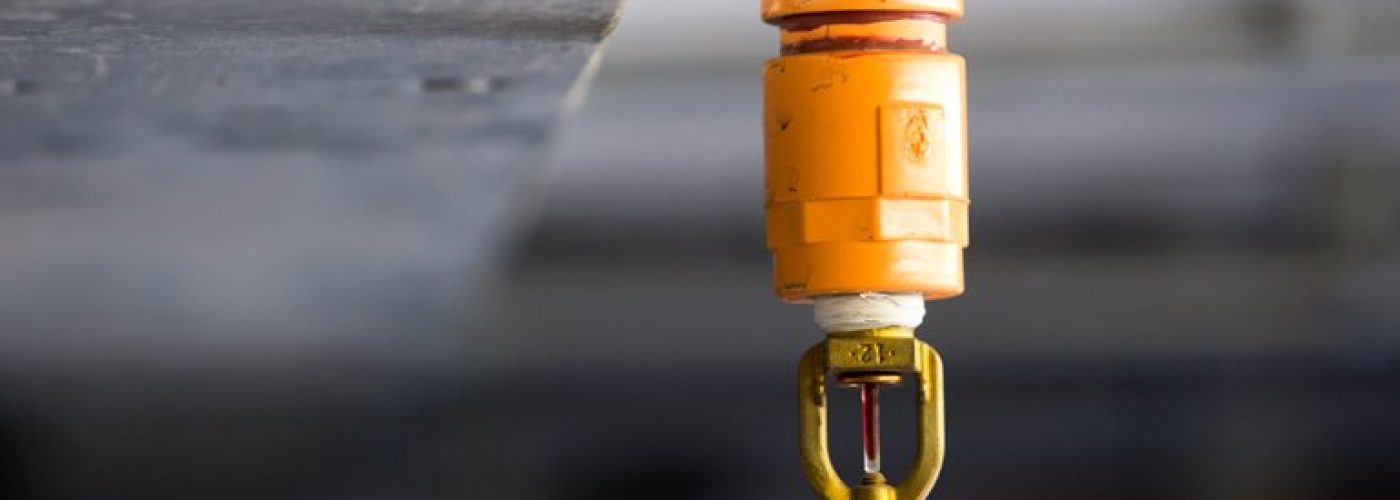Sprinkler tank refurbishment is the most cost-effective way to deal with a range of common water tank problems. Though not always possible, it is the preferred remedy because refurbishment delivers a long-term solution. If a tank is identified during an independent inspection as suitable for remedial works, this is the course of action that should be followed. As well as delivering durable repairs, it will offer cost savings and limit disruption.
Many site owners and municipalities don’t recognise the benefits of refurbishing a fire sprinkler tank. Others don’t even know it is possible. They simply assume an old, corroded or leaking LPCB tank has reached the end of its life. While sometimes a tank will need to be replaced, discarding one that can be repaired is bad for the environment and the more expensive option.
There are lots of good reasons why refurbishment is the better choice. So, is it worth having your water tank repaired?

Water tank refurbishment
The fact is that water tank refurbishment is worth it – if your tank is considered a suitable candidate. Not only will it save money, it will ensure a tank carries on storing water for a fire sprinkler system for many years to come. Other benefits include:
- Deals with the presence of any corrosion
- Stops water from being wasted
- Reduces short and medium-term disruption of water supplies to a sprinkler system
- Negates the need for a tank to be decommission and removed
- Minimises on-site hassles
- Keeps insurers happy
Many sprinkler tank refurbishment projects are carried out to reduce downtime. Refurbishment is a much quicker process than draining, dismantling and removing an existing tank ahead of the installation of a new one. Concrete, galvanised steel and GRP tanks are routinely refurbished across the UK. Less expensive than the sometimes-complicated removal process, repairs take a fraction of the time.
Fire sprinkler tanks suitable for refurbishment may present with any of the following common problems:
- Weak spots in tank walls
- Presence of corrosion
- Blisters of rust inside the tank
- Leaks
- Splits
If caught in time, all these issues can be effectively remedied with refurbishment.
Sprinkler tank refurbishment process
The processes involved in sprinkler tank refurbishment mean a tank will have to be drained before work can start. A contractor will always give a clear indication of how long this is likely to take. Once a tank is empty, the repairs can begin. A typical works schedule will include:
- Closure of the inlet valve
- Isolation of electrics
- Pumps tagged
- Tank draining
- Installation of ventilation and other safety equipment
- Removal of sediment with specialist wet vacuums
- Repair of tank’s internal surfaces
- Application of surface tolerant coating
Once this work has been completed, and following a necessary ‘curing’ period, a tank can be refilled and put back into service. This type of refurbishment is guaranteed to last for a decade by reputable contractors. They will ensure that a project is completed to the very highest standards. In addition, all those working on the project will have the necessary safety training.
Always use a contractor accredited by CHAS. This help you save time at the tendering stage and limits the amount of paperwork that will need to be duplicated. Other things to look out for are links to recognised trade associations, such as the British Automatic Fire Sprinkler Association. The last thing you want is an unqualified, unaccredited contractor working on a vital component of your life saving sprinkler system.
Extending the life of an LPCB sprinkler tank
Because an LPCB sprinkler tank forms an integral part of loss prevention strategies, it makes sense to ensure they are properly maintained. Routine checks can flag up early warning signs and ensure sprinkler tank refurbishment is a viable option. Experts recommend yearly inspections from an independent contractor. As well as helping you to save money, this process is convenient and economical.
All inspections below the water line should be carried out with ROV equipment. This will ensure a tank does not have to be drained for the process. A fire sprinkler system will be fully operational throughout. If you are ever approached by an inspection team that wants to drain your tank, call another contractor. It is not necessary and significantly adds to the cost. It also wastes water and time. Importantly, it will knock out your sprinkler system’s water supply.
Sprinkler tank refurbishment is a savvy move. If you are told by a qualified expert that your water tank is suitable, get the work done. It will be guaranteed and last for at least a decade. At a time when the risks posed by fire are very rarely out of the headlines, now is the time to act. Ignoring problems can make them worse and significantly add to the final cost of putting things right.





